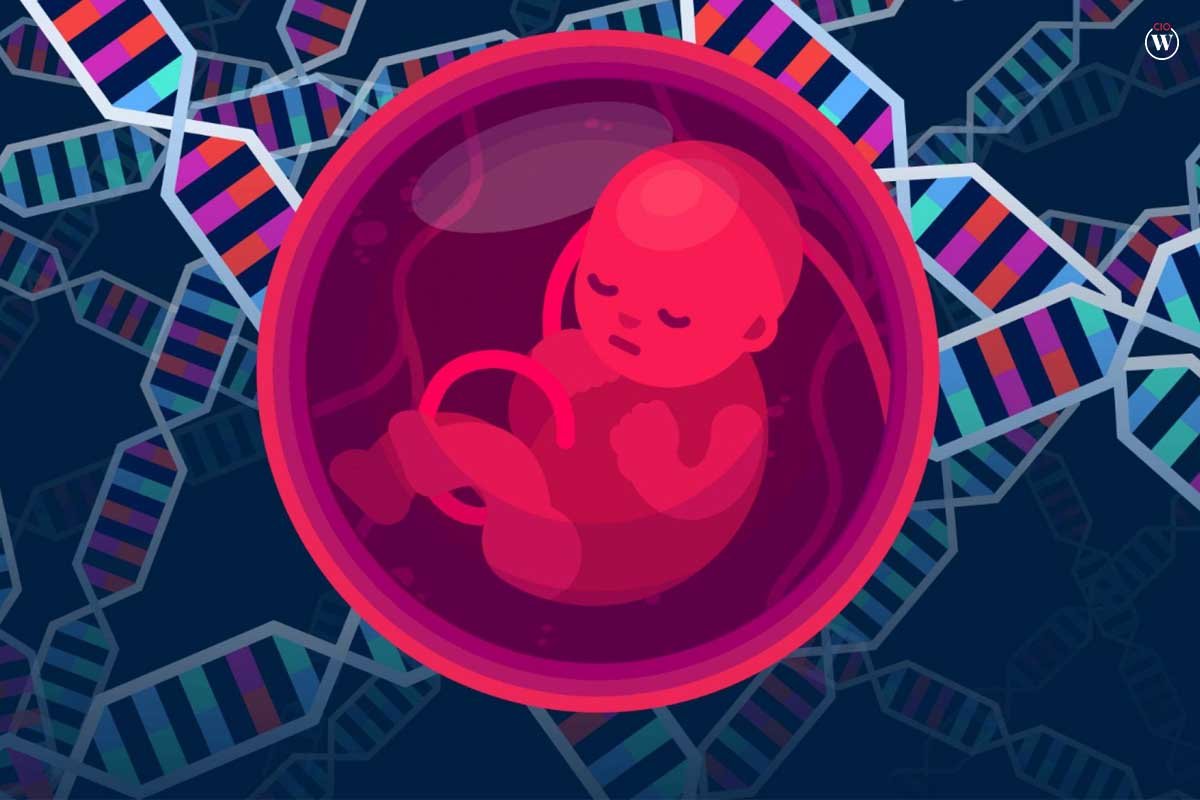These are some of the most remarkable, stunning, and occasionally contentious Breakthroughs in the History of Medicine that have captured our attention throughout the years.
Here are the 15 Most amazing Breakthroughs in the History of Medicine;
1. The next generation of bionic eyes
Scientists have been seeking for new and better techniques to restore eyesight in those who could previously see since the competition for the world’s first prosthetic eye finished with a successful transplant in 2015. Following in the footsteps of Melbourne ear surgeon Graeme Clark, who invented the cochlear implant in the 1970s, Australian researchers are pioneering a number of world-first, next-generation technologies.
Bionic Vision Technologies, an Australian medical device company, announced in November that Melbourne researchers had successfully restored a sense of vision in four blind people with Retinitis Pigmentosa, the leading cause of inherited blindness, using its next-generation bionic eye Breakthroughs in the History of Medicine. Farther north, the University of Sydney researchers created the ‘Phoenix 99 Bionic Eye,’ a wireless microchip implant technology that they intend to try on people by next year.
2. The very first uterus transplant
In December, surgeons announced the birth of the first baby born after a uterine transplant from a dead donor. Doctors reported in the Lancet that the healthy baby girl was delivered last December at Brazil’s Hospital das Clinicas, weighing almost six pounds. which is most amazing Breakthroughs in the History of Medicine.
Whilst this is not the first baby born from a uterus transplant (there have been 11 confirmed instances since 2014), it is the first time in the world that a baby was born from a dead donor, and it is considered the first successful uterus transplant in Latin America.
A lady with ovaries but no uterus was the donation recipient.
The birth, according to doctors, is a “source of hope” for people who do not have a uterus and may help patients avoid dangerous live donor transplants.
3. Designer babies and rogue CRISPR
The revelation in November by Chinese scientist He Jiankui that he had edited the DNA of twin girls to make them immune to HIV infection using CRISPR technology irrevocably transformed the genome editing landscape.
His study, yet to be published and undertaken without government authority, caused shockwaves throughout the globe and led to widespread criticism of so-called ‘designer babies’ Breakthroughs in the History of Medicine.

The project was deemed risky and immoral by researchers, who said it would expose the twins to unknown medical dangers.
Yet, the rogue scientist, who was just named to Nature’s 10: Persons Who Matter in Science list, said that he was “proud” of what he had accomplished and that his goal was to assist those living with HIV. Since then, the Chinese health ministry has initiated an inquiry into the study, and He Jiankui has been barred from continuing his research.
4. 100% human skin transplant for safer burn treatment
For more than 40 years, skin graft cultures containing a mix of human and mouse cells have been used to heal severe burns and skin lesions.
Skin cells are often extracted from the patient and cultured in the lab to generate a bigger patch of tissue, which is subsequently transplanted into the wounds. Doctors would then add mice cells to the culture to encourage tissue development, but this might expose humans to infection or a negative immunological reaction from the mice cells.
To address this issue, Singaporean researchers developed a 100% skin transplant cell culture that employs solely human cells. When searching for comparable cells in the body, the researchers discovered a kind of protein that may be utilized instead and has been successfully tested in animal studies this is amazing Breakthroughs in the History of Medicine.
In Operation Debug, mosquitos were rendered infertile in order to prevent the transmission of illness.
As a landmark victory in the fight against disease-carrying mosquitos, scientists wiped off 80% of one of the world’s most hazardous species, Aedes aegypti, which can transmit fatal viruses including dengue, Zika, and chikungunya.
The worldwide Debug project researchers employed specialized technology to sterilize about three million non-biting male Aedes aegypti mosquitos and release them in trial zones along Queensland’s Cassowary Coast, thanks to an international collaboration between CSIRO, Verily, and James Cook University. When the infertile males mated with native female mosquitoes, the eggs did not hatch, and their reproductive rates plummeted.
According to the researchers, the sterile insect approach has been utilized effectively since the 1950s, but this was the first time they tested mosquito-rearing, sex sorting, and release technology with such positive results and Breakthroughs in the History of Medicine.
5. Vaccination
The coronavirus epidemic has kept vaccines at the forefront of everyone’s thoughts this year, but this is far from the first public health disaster to rely on immunizations to reverse the tide.
Edward Jenner created the first effective vaccination, the smallpox vaccine Breakthroughs in the History of Medicine, in 1796. He saw that milkmaids who had previously had cowpox tended to prevent smallpox, which inspired him to boost the immune system with a less hazardous or dead component of a germ.
Smallpox was one of the deadliest illnesses ever known to man, with an estimated 300-500 million people dying from it during the nineteenth century. In 1978, less than two centuries after the vaccine was created, a lady called Janet Parker died in Birmingham from smallpox when the virus escaped from a lab. She is still the last person to die from the condition.
Smallpox is still the only human illness that has been totally eliminated through vaccines, which have saved countless lives over the years.
6. The germ theory
Did you know that it took until the nineteenth century for people to agree that germs cause disease? You may have heard of one of the field’s key actors, French scientist Louis Pasteur, who demonstrated that the fermentation of wine and souring of milk is produced by live microbes.
But have you ever heard of the name Joseph Lister? Lister, a surgeon at Glasgow University, was the first to apply germ theory to surgery. Lister brought the antiseptic concept to surgery in 1865, altering the discipline by allowing for the prevention of infection in wounds during and after surgery.
This seemingly little adjustment had a significant effect, resulting in a significant decrease in infections and mortality after procedures Breakthroughs in the History of Medicine. Surgery is now a common therapy for many medical disorders, and without antiseptic principles, even the simplest operation may be fatal if the infection enters the body.
7. Three-dimensional printing
Lastly, 3D printing Breakthroughs in the History of Medicine, which looked futuristic not long ago but now offers enormous prospects for the future. Chuck Hull invented the first 3D printer in the 1980s to produce solid buildings for the industry. It didn’t take long for the medical community to take notice.
Currently, 3D printing is used to make dental implants and prostheses, but researchers aim to push the technology even further by producing whole organs. Although there is still a long way to go, scientists have begun to print cells and tissues using a technique known as 3D bioprinting. This enables scientists to develop novel biomaterials in order to better understand how the body operates. We may expect to see whole 3D-printed organs in the future, which might be used to test novel pharmaceuticals and potentially remove the need for animal testing.
8. The Very First Modern Plastic Surgery
Cosmetic surgery Breakthroughs in the History of Medicine conjure us visions of Hollywood actresses with enlarged and improved bodies, yet it was pioneered and expanded for considerably less aesthetic purposes. Aircraft and crews were deployed in unprecedented numbers during WWII. The horrific burns experienced by several of the crew when their aircraft were shot down, burning the gasoline in the process, were also unparalleled.
Archibald McIndoe, a New Zealand doctor, was one among those tasked with treating those guys. In 1938, he was hired as a consultant plastic surgeon to the Royal Air Force, one of just four in the fledgling specialty in the United Kingdom.
At the time, medical practice was to treat a burn with another burn. The injured skin was removed with acid, followed by a two-month waiting period to enable the region to recover enough to bear surgery. Not unexpectedly, the patients endured eight weeks of misery. It also left people who were burned with such terrible scars that they frequently dreaded coming out in public for the rest of their lives.
Such extreme wounds demanded a drastic departure from the convention for McIndoe. The first novel approach he devised was a saline bath for crew members with severe burns. The concept was inspired by pilots who ditched at sea and ended up in seawater. Their burns healed far faster than others who jumped out on shore.
McIndoe’s next step was to operate right away, incising the injured tissue and creating a novel skin-grafting procedure to replace it. Not only did this result in significantly reduced scarring for patients, but it also enabled them to begin utilizing the burnt region much sooner in the healing process.
Apart from his surgical abilities, McIndoe was well-known for his understanding of the psychological consequences of burns. He discontinued the practice of clothing patients in convalescent robes and instead insisted on them continuing to wear their regular military clothes. He also enlisted the support of local families, who invited his patients over for dinners and other occasions, allowing his patients to reintegrate into society rather than hide from it.
In an appreciative and tongue-in-cheek appreciation of how McIndoe’s pioneering approaches had benefitted them, his patients promptly called themselves The Guinea Pig Club. He was knighted in 1947 for his efforts in treating the bodies and minds of his wartime patients. And his techniques, like the skin transplant he pioneered, are being used in reconstructive surgery today.
9. The First Blood Transfusion
You simply need to read a novel set in the 1800s or earlier to realize that women have often died in delivery throughout history. Uncontrolled bleeding after birth was one of the most prevalent causes.
A British doctor named James Blundell realized that transfusing blood into these ladies may save their lives. He was also aware that others had been experimenting with transfusions for about 200 years, frequently with catastrophic effects, owing to the use of animal blood.

Blundell performed his first human effort on a lady who was hemorrhaging after delivery in 1818, after successful tests transfusing blood from one animal of the same species to another. He transfused 4 ounces of blood into the lady using her spouse as a donor.
She lived, but not all of Blundell’s future patients did. While Blundell was the first to recognize that human blood had to be used on other people, no one recognized that blood came in various kinds — and that a transfusion with the incorrect type would result in immunological rejection and, in some cases, death.
Transfusions remained risky until 1901 when an Austrian doctor named Karl Landsteiner identified the many blood types and which ones could be safely blended with others.
Others’ ongoing research enabled physicians to bank blood, divide it into components such as plasma Breakthroughs in the History of Medicine, and test for blood-borne diseases. Every year, over 15 million transfusions are performed in the United States.
10. Vitamins’ Discoveries
The discovery of vitamins by Frederick Hopkins and colleagues in the early 1900s via animal feeding research led to a much better knowledge of nutrients and helped to avoid many diseases and ailments caused by deficiencies is amazing Breakthroughs in the History of Medicine.
11. The First X-Ray
Repairing fractured bones and determining the source of many other disorders would have been much more difficult without X-rays, which have further colored our picture of the human body. In 1895, Conrad Rontgen developed the process and utilized it to produce a picture of his wife’s hand and it is known as Breakthroughs in the History of Medicine.
12. DNA
The Swiss physician Friedrich Miescher discovered DNA, which was once called ‘nuclein’ (what was wrong with that name?). This Breakthroughs in the History of Medicine have resulted in a far better knowledge of a variety of diseases and disorders, but it is anticipated that as gene therapy becomes more extensively employed, many more discoveries will be made. Of course, the discovery of DNA has sparked several critical debates on the nature of mankind and our role in our own development.
13. Insulin

Diabetes was a disorder that would lead to a long and unhappy death until Frederick Banting discovered the hormone insulin in 1920. Now, owing to this discovery, most diabetes patients may live normal and complete lives, affecting the lives of millions of people worldwide.
14. Anaesthetic
If you’ve ever undergone surgery without any type of anesthesia, you’d understand how significant this finding was. You had a rope to bite onto and a shot of vodka before anesthesia…
15. Penicillin
This is the one that everyone learns about in school, and it was the huge ‘Breakthroughs in the History of Medicine’, discovered by Alexander Fleming in 1928. The discovery of penicillin is largely responsible for the creation of all antibiotics used today to battle germs. Formerly, if you sliced your leg and it grew infected, you had to choose between death and amputation…
Also read: 20 Leaders who have significantly contributed to Medicine









